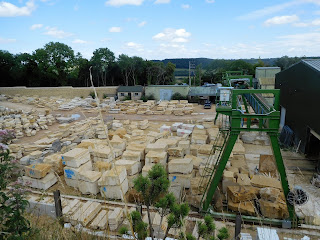On a dampish day, we set off for Prinknash Abbey. One of the downsides to making use of guide book from our shelf, publication date 1986, is that a very flourishing pottery run by the monks has been closed for the last thirteen years and the whole community has shrunk to just a small group of brothers. We walked up to the abbey building and visited the chapel where a few invisible monks could be heard at prayer. Then we had lunch in the surviving coffee shop which is clearly still a place of pilgrimage for some.
On the same site, we found a bird reserve, which we enjoyed very much. Rare to be this close to so many species.
With the weather closing down we decided to drive to Cirencester, an ancient foundation worthy of more detailed exploration. We had time to visit the huge central parish church, and the museum, where immediately these wonderful mosaics caught our eye.










































.JPG)